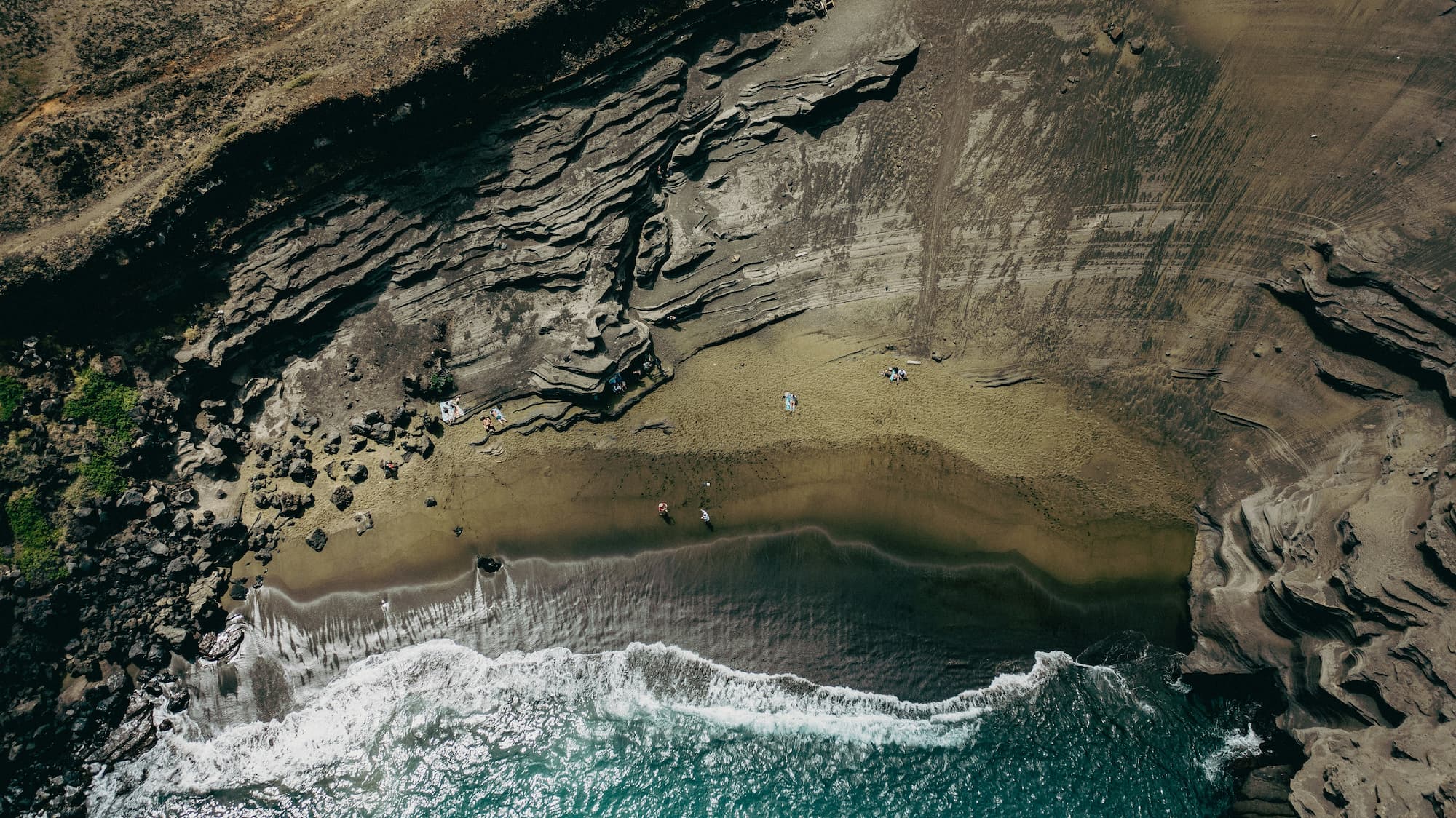
Dreaming of a beach getaway unlike any other? You may want to ditch the visions of pure white sand and turquoise water for something a little more unique – a green sand beach! Here’s a look at the four different green sand beaches across the world.
Punta Cormorant in Ecuador

Located in the world-famous Galapagos Islands, Punta Cormorant has a shoreline shimmering with olivine crystals, giving the sand a mesmerizing greenish-gold hue. Plus, on this beach, you might just spot some marine iguanas sunbathing or even a flock of pink flamingos.
Papakolea Beach in Hawaii

Volcanic activity is part of what makes Hawaii so special, and Papakolea Beach is a testament to that. The olivine-rich sand here takes on a stunning emerald green color, contrasting beautifully with the deep blue Pacific Ocean. Fair warning — be prepared for a bit of an adventure to reach this secluded beach. But don’t worry; the payoff is absolutely worth it!
Talofofo Beach in Guam

Talofofo Beach in Guam combines green sand with a healthy dose of history. Even though some visitors remark that the green hue on this beach is noticeable only during the right weather conditions, the olivine deposits accumulate across the sand. While you’re exploring, you can even check out nearby latte stones – megalithic structures left behind by the Chamorro people. Talk about a unique cultural and geological experience!
Hornindalsvatnet in Norway

Believe it or not, you don’t need a plane ticket to the tropics for green sand. Norway’s Hornindalsvatnet Lake boasts unique green sand on its shores. As the deepest lake in Europe, its frigid waters are too cold for swimming, but the green sand, formed by glacier movements thousands of years ago, is truly a sight to be seen.
FAQs

What causes a green sand beach?
Green sand beaches get their unique color from a mineral called olivine. When volcanic magma cools, olivine is one of the first crystals to form. Over time, erosion from wind, rain, and waves breaks down the volcanic rocks containing olivine. Lighter materials like ash and glass are washed away, but the dense and tough olivine stays behind. This accumulation of olivine gives the sand its green color. These beaches usually form in sheltered bays where olivine can gather without being scattered by strong currents. The specific shade of green depends on the composition of the olivine, which can range from yellow-green to nearly black.
How rare are green sand beaches?
Green sand beaches are quite rare – there are only a few known green sand beaches around the world because they require very specific geological conditions to form. Olivine is a common mineral in the Earth’s mantle but is relatively unstable at the surface, where it can quickly weather and break down into other minerals. That’s why green sand beaches only form in areas where olivine is continuously replenished by erosion of nearby volcanic rocks or deposits.



